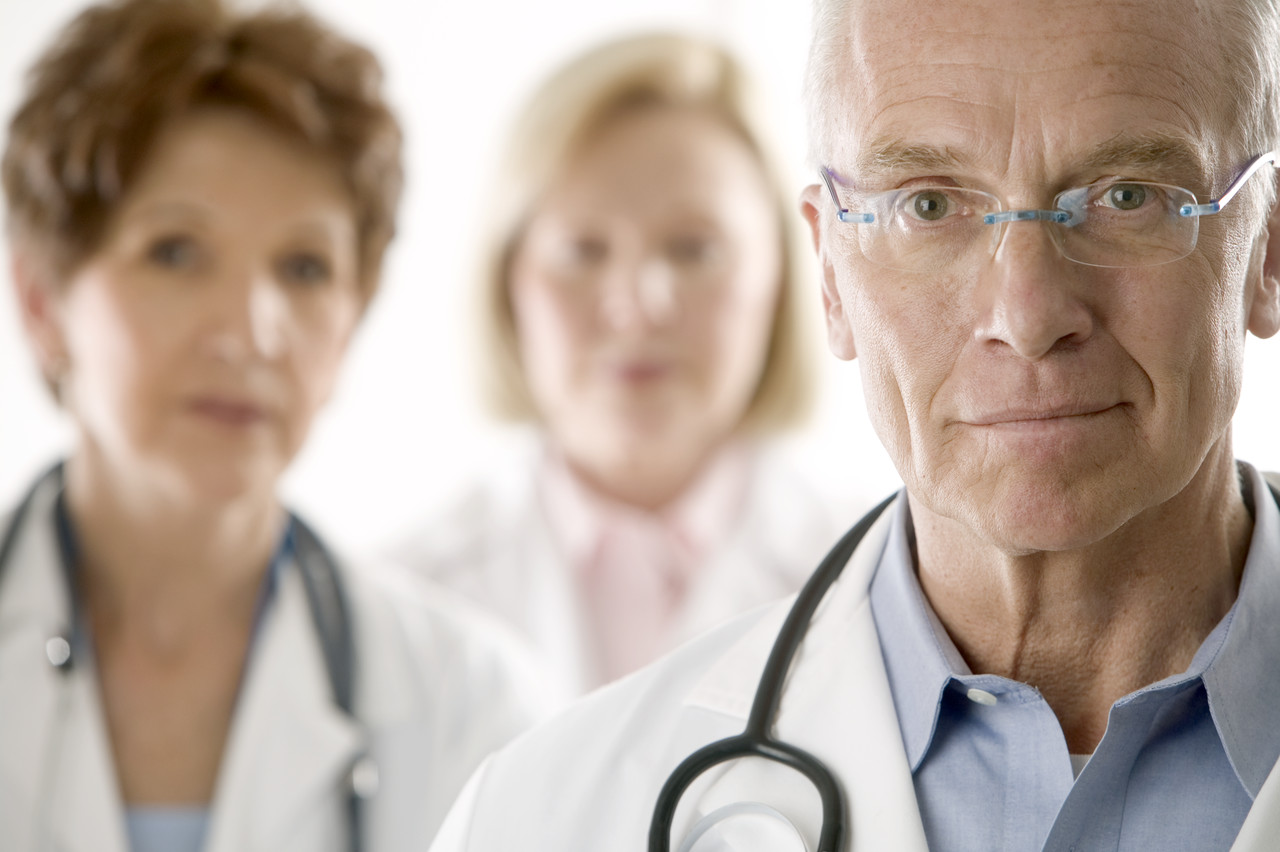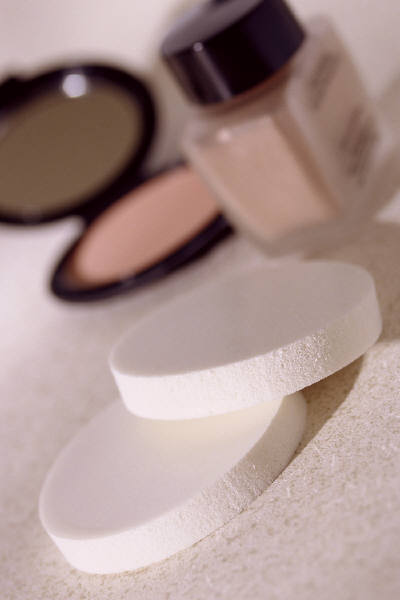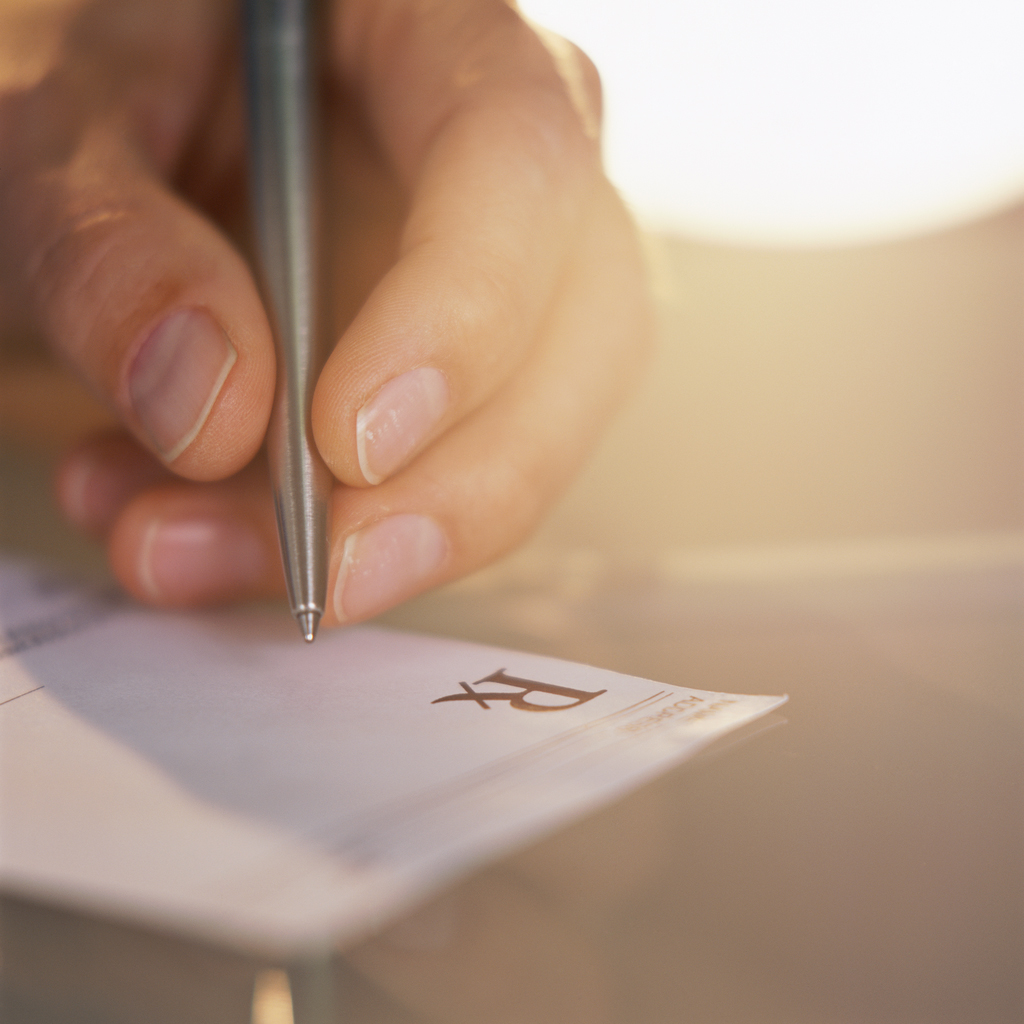There are many ways to manage and treat acne. While mild acne may be easy to control with proper skin care and over-the-counter remedies, you will need to see a doctor to treat moderate or severe acne. Generally, treating acne begins with good skin care and progresses to prescriptions or medications as needed.

You want to call your doctor if:
- your acne does not improve after 6 to 8 weeks or it gets worse
- your acne leaves scars
- your pimples become large and hard or filled with fluid
- you develop other symptoms, such as excess facial hair if you are a woman
- your acne began when you started a new medication
Regardless of the treatment chosen, treating acne takes time. Mild acne may clear up in a matter of weeks, but moderate to severe acne may take months or years before the skin clears up.
The idea behind any acne treatment is to stop new blemishes from forming and to help the skin heal, thereby reducing the risk of scarring. The treatment you use will be determined by how well your acne responds. Begin with simple cleansers. If there is no visible improvement in three to four weeks, try a non-prescription topical treatment with benzoyl peroxide or with an antibiotic.
If there is no improvement after six to eight weeks, it’s time to discuss other treatment options with your doctor, such as prescription-strength benzoyl peroxide, antibiotics, retinoids, or combination products. It is important to remember that all acne treatments are meant to control the condition, not cure it.
Generally, you should seek medical help if your acne is severe or is getting worse, if your self-care measures and over-the-counter medicines haven’t helped after several months, or if you are developing scars as your acne does clear up.
Managing Acne
Lifestyle changes, such as choosing the right skin products, are a common first step to controlling acne and usually take 6 to 8 weeks to show any effect.
 Skin type: Most people can use just about any soap, cleanser or gel without worrying too much about how they might affect their skin. That’s because their skin type is “normal,” reflecting the average in terms of moisture content, oil production, surface acidity and chemical sensitivity.
Skin type: Most people can use just about any soap, cleanser or gel without worrying too much about how they might affect their skin. That’s because their skin type is “normal,” reflecting the average in terms of moisture content, oil production, surface acidity and chemical sensitivity.
People with oily skin should look for products that are easy to rinse off, such as most bar soaps and cleansers, so that excess oil goes down the drain. Many of the cleansers intended for acne-prone skin can also help people with oily skin.
People with dry skin should look for water-soluble cleansers that remove makeup and excess oil only. Cleansing sheets that leave a trace of an emollient to recondition dry skin can also help.
People with sensitive skin should avoid cleansers and soaps with fragrances and preservatives. Also, it’s best to avoid scrubs, such as cleansing grains, brushes and loofahs, which can irritate sensitive skin and worsen acne if used too vigorously.
Over-washing: On its own, washing your skin won’t cure or prevent acne, and scrubbing with harsh cleansers or over-washing could end up irritating your skin. But washing twice a day with a mild cleanser and water will certainly help remove excess oil from your skin, which is a step in the right direction.

Cosmetics: Oil-based cosmetics can irritate pores, causing them to swell and become blocked and set up ideal conditions for acne to develop. If you have acne, look for water-based moisturizers and make-up, and apply them lightly. When applying conditioners, gels and sprays to your hair, shield your face to avoid getting any on your skin. (Since these products are designed to coat your hair, they will do the same to your skin and block your pores!) Remember, these products can also transfer from your hair to your pillow and then onto your skin. To avoid this problem, wash your pillowcases frequently and consider wearing your hair off your face while you sleep. There are also flesh-toned, medicated acne lotions that can safely hide acne blemishes. Light powder over an oil-free foundation can provide good cover-up. Be sure to remove cosmetics every night with mild soap or cleansers and water before you sleep.
Non-prescription Treatments
Topical Treatments
Cleansers: Cleansers remove oil, sweat, dirt and make-up from the skin’s surface. For best results, use a water-based, unscented cleanser that is strong enough to remove cosmetics but gentle enough to wash away only excess skin oil.
Medicated treatments: Like cleansers, these treatments remove oil, sweat, dirt and make-up from the skin’s surface, which then clears the way for their active ingredients to be better absorbed by the skin. Make sure to use these medicated cleansers as directed on the label, usually once or twice a day. Overuse can lead to dry, irritated skin.
Apply topical treatments to the entire area where you have acne, not just the visible blemishes since you also want to treat smaller areas before they become worse. Expect to use these treatments for six to eight weeks before you see any substantial improvement. Some topicals contain salicylic acid, which breaks down blackheads; others have as their active ingredient non-prescription strength benzoyl peroxide, which has anti-bacterial effects and also goes to work on blackheads; still, others have only anti-bacterial effects.
Prescription Treatments
 Acne medications available by prescription use a variety of approaches to clear the skin. They may fight inflammation, loosen skin cells, block sebum production, change the body’s hormone balance, or prevent scarring. Many topical treatments are available as both individual and combination formulations (a preparation that contains more than one type of medication). If you have a very severe case of acne where topical therapies and over-the-counter skin care products are not enough, or if you have widespread acne over many body areas, your doctor may prescribe a medication that comes as a pill or even as an injection.
Acne medications available by prescription use a variety of approaches to clear the skin. They may fight inflammation, loosen skin cells, block sebum production, change the body’s hormone balance, or prevent scarring. Many topical treatments are available as both individual and combination formulations (a preparation that contains more than one type of medication). If you have a very severe case of acne where topical therapies and over-the-counter skin care products are not enough, or if you have widespread acne over many body areas, your doctor may prescribe a medication that comes as a pill or even as an injection.
Topical treatments
Benzoyl peroxide: Benzoyl peroxide comes in many different strengths and preparations, including gels, creams, lotions, soaps and even facial masks. It destroys acne-causing bacteria and dissolves the keratin in blackheads, thus unblocking the oil-gland pores. Prescription-strength topical treatments have a concentration of approximately 10 per cent benzoyl peroxide, compared with 2.5 per cent in non-prescription preparations. Some combination topical therapies also contain benzoyl peroxide, typically pairing it with an antibiotic. These products can irritate your skin and, rarely, can cause skin allergies. The peroxide in these products will also bleach the colour from clothing and linens.
Corticosteroids: Corticosteroids are synthetic versions of a hormone made in the body. When applied to the skin, they reduce inflammation, making them useful treatments for inflammatory acne. These medications are applied to acne lesions once or twice daily. If corticosteroids are used for an extended period of time over a large area of skin, the drug may be absorbed into the body, which can cause hormonal problems in rare cases. For this reason, it’s important to follow your doctor’s instructions if you are using a corticosteroid cream or lotion. Don’t bandage, cover or wrap the treated area unless directed by your doctor. Side effects include burning, itching, irritation and dryness.
Dimethicone: Dimethicone is a silicone-based gel that can help prevent scarring caused by severe acne. When applied to skin areas where severe acne is healing, it dries to form a thin, water-tight film that keeps the skin below from drying out while it repairs itself. This helps prevent the formation of scars and the itching, discomfort and discoloration that often accompany them. The gel is massaged into the scarred area twice daily. In rare cases, it can cause skin redness, pain or irritation.
Retinoids: The current standard for treating stubborn acne, retinoids are synthetic by-products of vitamin A that correct the abnormal shedding of the skin cells lining hair follicles. Retinoids also reduce the amount of oil produced by the sebaceous glands, as well as thin the oil so that it can no longer clog pores. It is available by prescription, and your doctor has a number of retinoids in cream and gel form to choose from, including tretinoin, adapalene and tazarotene. Retinoids can be a source of skin irritation if used too often or if the dose is too strong. Here are some general guidelines for using topical retinoids:
- Begin your course of treatment by using the retinoid every other night to see how your skin will react. If your skin doesn’t become irritated after several applications, you can increase to every day, if so directed by your doctor.
- Wait 30 minutes after washing before applying the cream or gel.
- Apply a pea-sized amount to your finger for each affected facial region: forehead, nose/chin and each cheek.
- Apply it gently to the whole region, not just the pimples (don’t simply spot treat). If you apply the medication to the visible pimples only, it won’t prevent new ones from appearing elsewhere.
- Avoid getting any in your eyes, and wash your hands well.
- Don’t layer topical retinoids with any other skin treatment or moisturizer.
- Reduce use if your skin becomes irritated.
Dermatologists recommend that topical retinoids not be used during pregnancy or during nursing because of uncertain risks to the baby. Topical retinoids may also increase sun sensitivity. Discuss with your doctor what kind of sunscreen you should use when outdoors.
Topical acne antibiotics: For mild to medium acne, doctors often prescribe clindamycin, erythromycin or sulfacetamide to destroy the bacteria that cause pimples, boils and cysts. These antibiotic preparations are most often used twice a day to treat whiteheads and small blemishes.
Combination products: These products, which usually combine benzoyl peroxide or a retinoid with an antibiotic, contain two medications to treat acne and help maintain clear skin. Combination products your doctor may prescribe include:
- Topical tretinoin plus erythromycin: Apply once daily before bed after washing your face and patting it dry.
- Topical tretinoin plus clindamycin: Apply once daily before bed after washing your face and patting it dry.
- Topical benzoyl peroxide plus erythromycin: Apply a thin layer once or twice daily after washing your face and patting it dry. This product must be refrigerated. It may bleach clothing and linens.
- Topical benzoyl peroxide plus clindamycin: Apply a thin layer once daily after washing your face and patting it dry. It may bleach clothing and linens.
- Topical benzoyl peroxide plus adapalene: Apply a thin layer once daily after washing your face and patting it dry. It may bleach clothing and linens.
Systemic treatments
Antibiotics: This medication is reserved for people whose acne isn’t responding to topical treatment or who have widespread acne on many areas of the body. Their main effects are to destroy bacteria and reduce inflammation. Mild nausea and indigestion are common side effects, but these tend to ease after a few days. Each antibiotic has its own safety profile and things to do or to avoid for best results; you should discuss them with your doctor. Make sure to follow the prescription instructions and take all your medication (even if your skin clears up before the prescription is finished). The most commonly prescribed antibiotics for acne include:
- tetracycline
- minocycline
- doxycycline
- erythromycin
- trimethoprim
- azithromycin
Oral isotretinoin: The most potent acne medication that doctors prescribe, isotretinoin is usually reserved for severe nodular cystic acne that doesn’t improve with other types of treatment. Virtually everyone responds favourably after one course of oral isotretinoin (usually four to six months), and the benefits last a long time for most patients. If improvement is slow, however, multiple courses may be needed to achieve clear skin.
If you have very oily skin, large blackheads, acne on your chest and back, and if you’re in your early teens, your acne may return after a course of oral isotretinoin. Adult women are also at higher risk of seeing their acne return. Side effects include irritated skin and dry eyes and nasal passages. Just about everybody who takes oral isotretinoin develops dry lips and will need to moisturize several times a day to avoid cracking. Other reported side effects include mood changes, a rise in cholesterol levels, liver problems, joint inflammation and a reduced ability to produce white blood cells. Most side effects become more frequent and more severe with higher doses, and most will disappear within two weeks after reducing the dose or stopping the medication. Periodic blood tests can monitor for cholesterol and changes in how well the liver is working.
Oral isotretinoin can cause birth defects. Women of child-bearing age who use this medication must follow the Pregnancy Prevention Program, which requires the use of two forms of birth control to avoid any possibility of pregnancy one month before the course begins, throughout the whole time the oral isotretinoin is taken, and for one month after stopping the medication. Monthly pregnancy tests are also recommended.
Despite these potential hazards, oral isotretinoin remains the most effective therapy currently available for treating serious, stubborn, cystic acne and for reducing the risk of scarring. Dermatologists tend to be the chief prescriber of oral isotretinoin since it requires accurate dosage, close monitoring and periodic blood tests for best results.
Oral contraceptives: Oral contraceptives can be used by women as a primary treatment for acne or if a woman with acne needs birth control. These pills combine progestin and estrogen, so they alter the hormone balance in the body and reduce testosterone levels. This treatment can improve hormone-based acne breakouts and reduce pore blockages. When used alone, oral contraceptives can be used as a long-term acne therapy for mild to moderate acne breakouts. They can also be used in conjunction with other medications for women with more severe acne. Common side effects associated with long-term use can include nausea, weight gain, breast tenderness, menstrual spotting, and mood swings. More serious side effects, which are less common, include blood clots, stroke, headaches, gallstones, increased blood pressure, and depression.
For women with acne that appears after adolescence, new oral contraceptives combine estrogen with a type of progestogen that is an antiandrogen (i.e., it reduces the testosterone in the body). These can be used in combination with topical and other systemic medications and sometimes can be used after retinoid therapy has concluded in adult-onset acne.
Other Treatments
Corticosteroids: Corticosteroid medications are synthetic versions of a hormone naturally produced by the body. They change the body’s immune response, reducing inflammation in the skin and elsewhere. Your dermatologist may inject severely inflamed acne cysts with a corticosteroid to reduce inflammation, promote healing, and prevent scarring. If used for a long period of time, corticosteroids can cause changes in the body’s hormone production. If your doctor is considering using systemic corticosteroids to treat your acne, he or she will carefully plan the dosing and the duration of treatment to avoid this. A reported side effect is weight gain.
Laser and light therapies: Optical treatments, including intense pulsed light (IPL), pulsed dye lasers (PDL), potassium titanyl phosphate laser (KTP), infrared diode lasers, and broad-spectrum continuous-wave visible light sources (blue-light and blue-red light), have been suggested to reduce acne through heating of glands in the skin and inactivation of acne-causing bacteria. Laser and light therapies treatments are applied on top of the skin. While there is evidence for the short-term benefits of laser and light therapies, longer-term studies still need to be done. Common side effects include skin redness and hyperpigmentation (darker patches on the skin).
Tea tree oil: This is an oil valued for its antimicrobial properties. Tea tree oil is available over the counter and applied on affected skin areas. It should not be taken orally, as it is toxic if swallowed. Although it has been used to treat acne, there is little scientific data to support its use. One trial has suggested that 5 per cent tea tree oil gel reduced both inflammatory and non-inflammatory acne lesions. A common side effect is mild skin irritation.
New medications and treatments for acne may be tested through clinical trials across Canada. To learn more about possible new treatments, visit our clinical trials page [link to CSPA clinical trials page].
Footnotes:
*All information on medical treatments on this site is provided as an overview only. For a complete and up-to-date list of side effects, warnings and precautions, read the product’s package insert and consult your doctor or a pharmacist.
**If you are considering an alternative or complementary therapy, discuss it with your doctor first, and always be sure to keep your doctor up to date about any vitamins, supplements, or other forms of alternative treatment you are taking. Like any medication, alternative therapies can interact with other medications/treatments and, in some cases, have side effects of their own. Remember that “natural” does not necessarily mean “safe.”











